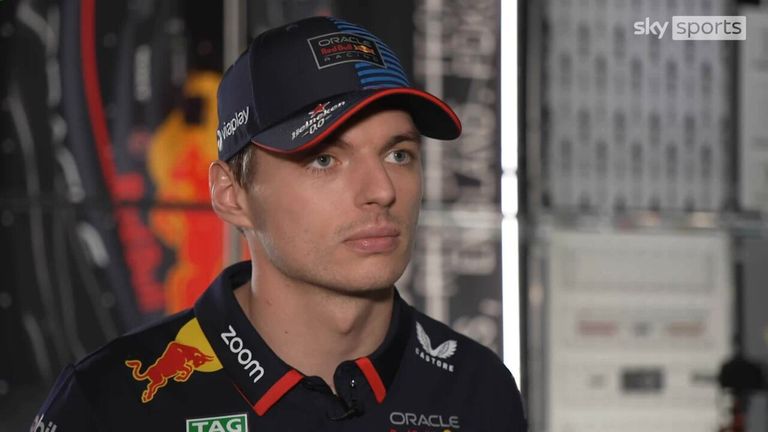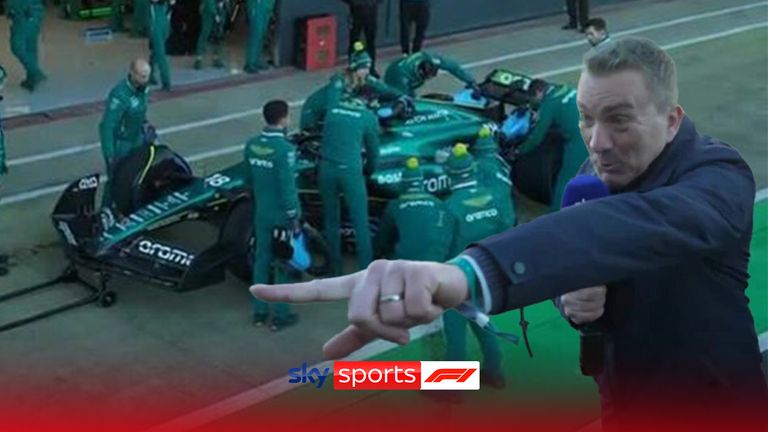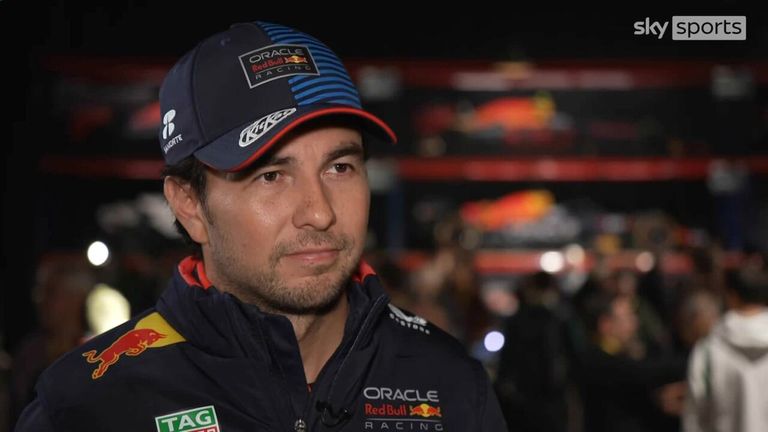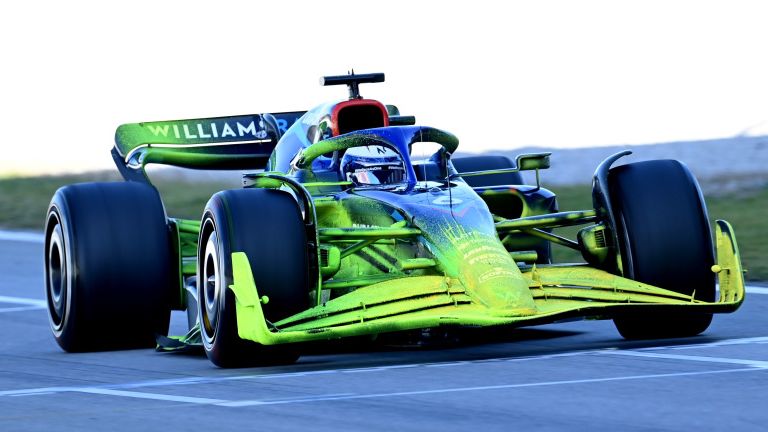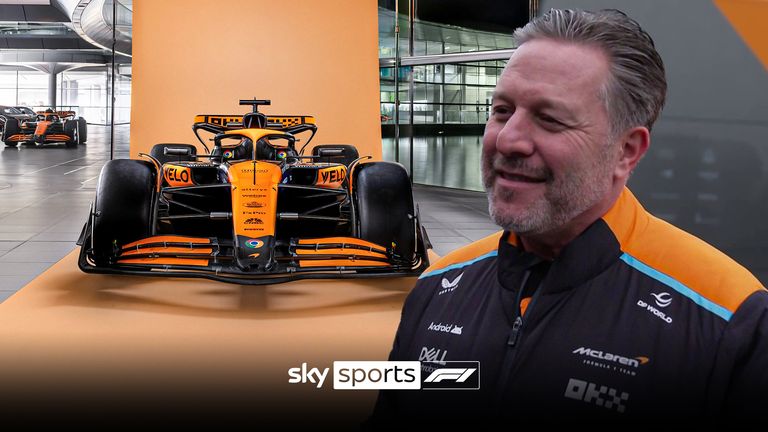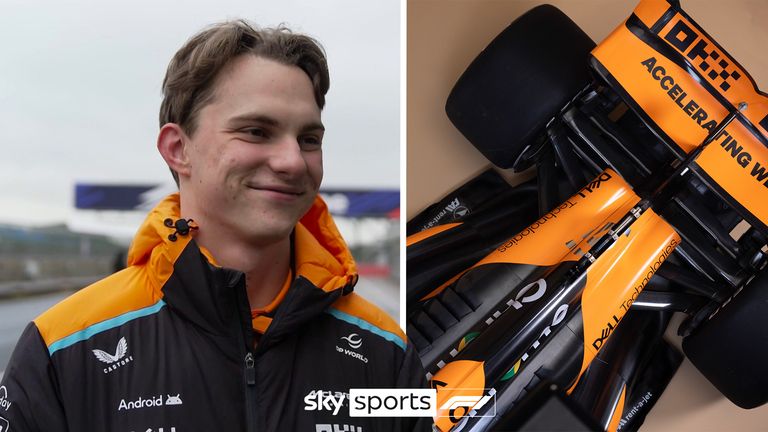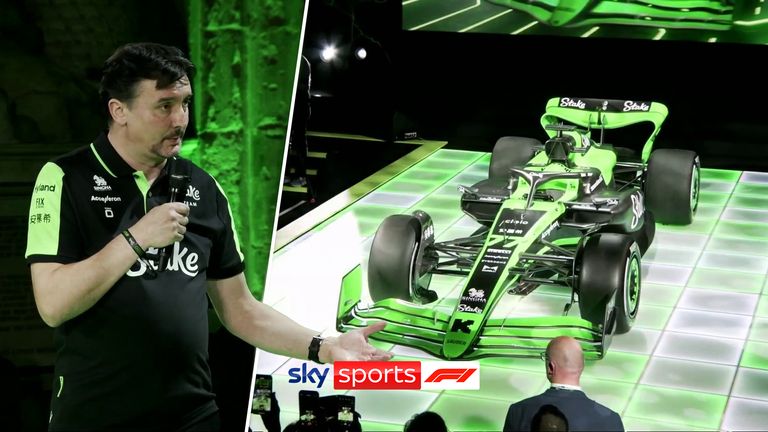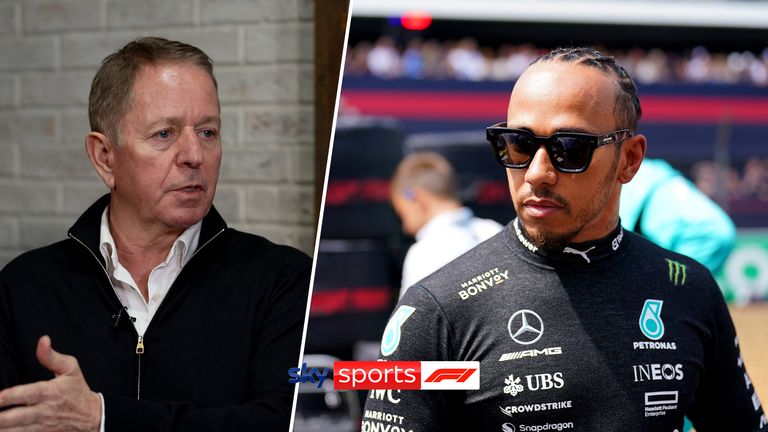[ad_1]
There is a lot more to Formula 1 testing than cars going around and around a track for hours. In fact, it is arguably the most important part of the whole season.
The 10 teams have just three days this week from Wednesday to Friday at the Bahrain International Circuit to prepare for the season-opening race on March 2, and you can watch it all on Sky Sports F1.
No points are handed out at testing but we get an idea of what to expect in the 24 races to come this season and who will challenge Red Bull.
Each team can only run one car during testing, so one driver will be behind the wheel and the other on the sidelines. There will be two four-hour sessions each day with the evening session in Bahrain held during sunset into the night.
We spoke to former Aston Martin strategist and Sky Sports F1‘s Bernie Collins to find out what happens within each team during this important time of the year.
Excitement mixed with nerves
The teams have been working on their 2024 cars since the middle of last year and most of the grid have made big changes to their machines.
A new season means new opportunities and Bernie describes how the teams will be feeling ahead of Wednesday’s test day in Bahrain.
“You’re always pretty excited before testing. You will have seen loads of reports from management or the aero department about how they think the car will be, so there will be lots of discussions of how fast you think it will be or what development could happen,” she said.
“The biggest thing is you can never use that to say how competitive you’re going to be. Even if they say ‘the car is going to be three seconds a lap faster around Barcelona’ for example, you don’t know what everyone else has done.
“So there is excitement but mixed with uncertainty. There’s always something in a car design that’s a bit nervous, be it for a reliability issue or something else.
“For a lot of the teams, some of the bits at the launch will be prototypes, so basically plastic bits of the proper component because the proper component is not ready yet.
“The reason for that is, some the teams had another week or two at the launch until testing and every week the car can be in the wind tunnel, refining the parts and development, that’s a week’s more development on the car.
“When we were in Barcelona, we used to have an upgrade for the final day so it’s only that day where you have the same car for the first race, and some teams even have upgrades for the first race.”
Will teams be aware of car’s pace already?
Each of the 10 teams have already ran their 2024 machines with filming days throughout this month before pre-season testing begins.
Aston Martin, Red Bull, Mercedes, McLaren and Haas conducted ‘shakedowns’ at Silverstone with Ferrari completing theirs a Fiorano, Sauber in Barcelona and RB at Misano. Alpine and Williams electing to do theirs in Bahrain just one day before the test.
Each team is allowed up to 200km of mileage on a filming day, with two allowed per season. However, the tyres are not the ones used in the season as Pirelli provide special rubber so no data can be gathered about the tyres.
“When you’re doing shakedowns, what you’re trying to largely do is you don’t have a reliability issue that stops you running on the first day of the test. Testing time is so critical and you want to get rid of any niggles on the car,” explained Bernie.
“They can be anything like big engine stuff or something is rubbing on the wheel – really simple things that takes a redesign. We’ve had in the past where the floor rubs on the car and then you break a piece of the floor which is so detrimental in testing because you only have one floor.
“A lot of the shakedowns, teams won’t be looking at competitiveness from it but making sure when they get to Bahrain, there is nothing stopping the car from getting on track.
“The drivers will give good feedback. If the drivers’ feedback is ‘this car’s terrible’ then it’s going to be a different year. Sometimes there is a test that takes a lot of time to change a component, so it might be a front suspension test which takes a few hours to do.
“You wouldn’t do that in Bahrain, or try not to, because that’s so much lost time. Whereas in the shakedowns, you have 200km and time is unlimited, so you can take all the time in the world to change things.”
What tests are done in F1 testing?
Come 7am UK time on Wednesday morning, every team will be ready to roll their car out onto the track and the first day will be about ticking off as many boxes as possible before looking for performance.
You are likely to see teams somewhat ruining the designs of their new liveries with fluorescent flow-vis paint, which is used to visualise air flow over the body of the car.
Another eye-catching feature you will see are aerodynamic rakes, which feature sensors designed to measure off-body flow structures, or in simple terms where the air goes after it hits certain parts of the car.
Both tools enable teams to gather further understanding of their cars, and potentially make further improvements, whether that be in the form of upgrades or just set-up.
“The number of test items always outweighs the number of runs you can do. The biggest thing is the aero performance of the car is so critical – you want to check that the wings and all of the aero is performing exactly as it should be so it matches the wind tunnel and the CFD. Those are the main tests you do,” continued Bernie.
“Then it’s mechanical tests for the suspension and then you want to find out about the tyres. It’s rare you can do the tests simultaneously because if you change from a medium to soft tyre, that will mess up the aero tests.
“The teams will have run the car with any component in the wind tunnel or CFD. In CFD, you’re modelling how the air flows over the car and in the wind tunnel it’s similar, to the point where you can put dye in the air of the wind tunnel, so it’s like a UV light almost.
“When running a rake of flow-vis, you’re checking if the air over the car matches your virtual world. You’re looking for correlation.
“Ultimately you’re looking for car performance but also that it correlates to your model because if it doesn’t correlate at this stage, it’s going to be very difficult to develop the car going forward. You’re trying to get both answers – is the car quick enough and does it match the model?”
When will the teams look for performance?
Bahrain is a track which tests every part of the car with long straights, high-speed corners and low-speed turns. It is also relatively bumpy in some parts and the weather will almost certainly be dry, so it is a great testing venue for the teams.
The session times in Bahrain means the final two hours will be held at night, in line with the qualifying and race start times for the Grand Prix, so the most representative running will happen then.
Asked when the teams will look at how fast their car is, Bernie added: “Probably towards the end of days two and three. In day one and in the shakedowns, you run a lot faster sensors on the car – not just externally but internally. There will be extra temperature sensors, extra vibration sensors and all these things to check the car.
“The car could be 10kg overweight in testing and it’s only on the last day where the teams get rid of all that weight. 10kg is maybe three tenths of a second.
“In testing, it’s very hard to compare morning and afternoon or across days because of different track conditions or wind conditions.
“When we did two sets of tests in Barcelona, the best way to figure out where your car sits amongst others is when people did a long run. People would do 66 laps around Barcelona, so you would know they started with 100kg and roughly ended at zero, then you can compare those laps against your own.
“Comparing low fuel laps is very difficult because you don’t know what fuel everyone is running at and you don’t know the engine modes. You can get engine a little bit because of GPS, but not all the time.
“I think now, because we only have three days, teams won’t waste the time doing a full race distance because you’ve got all the things which you have to test, which is more valuable. In recent times, it’s more difficult to get a good read of things from the car.
“Sometimes a car can feel very steady and easy to drive but that’s just because it’s slow. Sometimes they might come in and say ‘that run felt good’ but the lap time is not there.
“If the car is easy to drive or reasonably stable, you can add performance whereas if the car has a fundamental handling issue, it’s sometimes hard to get right.”
Constant questions about pace
Bernie revealed the bosses and senior figures in a team are always on edge about the car’s performance, so they know what to report to people high up in the business.
As a strategist, Bernie focused on tyre performance which has become a critical aspect in F1 and getting on top of the tyres as soon as possible can have a big affect on lap time.
“We look at tyre performance and get a first read on whatever changes that have been made to the car how that impacts degradation and loading on the tyres,” she said.
“You’re trying to get a feel of where you sit in the order but that’s difficult. The strategy department and each team will be looking at what tyres the teams are running, trying to get a feel of what fuel or engine modes the other teams are running.
“Some teams try to hide their pace but many try to get the right answers for them. From my point of view, you would always get management asking how things are looking and they want to know if the car is looking good. But it’s hard to confidently give an answer.
“People are nervous about if they have a good or bad car. The drivers I’ve worked with, probably with more experienced drivers, they know they will be in for a difficult year if the car’s bad and that’s quite stressful because they know there will be difficult results and it’s a lot more work to develop the car.”
“The people at the track have the greatest understanding of everything. If it’s a really positive car, that spreads from the track back to the factory eventually but it takes a bit of time that process.
“A lot of it depends a little bit on what happened in previous years or how that car has been sold to them. For example, at the beginning of last year Aston Martin were told that their car was going to be amazing, there would have been some hesitation initially but they probably wouldn’t have been as excited compared to if they were told ‘we’re not show how we will be’.
“A lot of it is expectations managed. The positive side probably affects the factory quite well, but the negative side doesn’t affect it as much.
“If you’re at a race team, you’re working longer hours to fix the car and not getting great results. So you’re already working hard to bring upgrades anyway.”
Sky Sports F1’s live pre-season testing schedule
Wednesday February 21 – Day One
- 6.50am-11.05am: Morning Session
- 11.55am-4.05pm: Afternoon Session
- 8pm: Testing Wrap
- 8.30pm: Ted’s Testing Notebook
Thursday February 22 – Day Two
- 6.50am-11.05am: Morning Session
- 11.55am-4.05pm: Afternoon Session
- 8pm: Testing Wrap
- 8.30pm: Ted’s Testing Notebook
Friday February 23 – Day Three
- 6.50am-11.05am: Morning Session
- 11.55am-4.05pm: Afternoon Session
- 8pm: Testing Wrap
- 8.30pm: Ted’s Testing Notebook
- 9pm: Development Corner
When is the first F1 race?
Just one week later, the opening race of the 2024 season will begin with the Bahrain Grand Prix from February 29 to March 2.
Due to the Muslim holy period of Ramadan, the Bahrain and, seven days later, the Saudi Arabian Grand Prix, will be held on a Saturday.
This means practice one and two will take place on Thursdays, with final practice and qualifying on Fridays.
Get Sky Sports on WhatsApp!
You can now start receiving messages and alerts for the latest breaking sports news, analysis, in-depth features and videos from our dedicated WhatsApp channel!
Find out more here…
Watch pre-season testing from Bahrain live on Sky Sports F1 from this Wednesday at 6.50am and every round of the new season, starting with the Bahrain Grand Prix from February 29-March 2. Stream every F1 race and more with a NOW Sports Month Membership
[ad_2]
Source link
